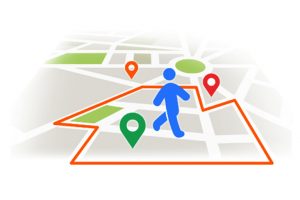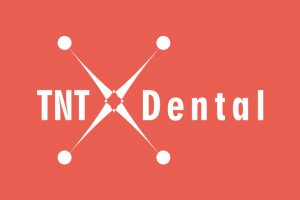 Dentists are always looking for ways to enhance their marketing strategy and outpace competitors in terms of both enticing new patients and keeping existing ones. As marketing veers more digital, with that comes new platforms and features that dental practices can use to capture those patients.
Dentists are always looking for ways to enhance their marketing strategy and outpace competitors in terms of both enticing new patients and keeping existing ones. As marketing veers more digital, with that comes new platforms and features that dental practices can use to capture those patients.
We kick off the series asking how to make geofencing for dentists work, but first, let’s take a couple steps back and learn about digital advertising, and more specifically, display ads. Then, we can delve into what exactly geofencing is and how it intertwines with the advertising.
Display Ads
 You know those advertisements that pop up on the side of your email box, on a webpage you’re viewing or within your Facebook feed? They’re display ads, and they do the very job you would think they would – displaying text, logos or images for a company. Otherwise known as the “Billboards of the Internet,” these kinds of ads don’t happen by chance. As with any advertising, you want to make sure you get your message in front of the right “billboards,” and strike a chord with your viewers. After all, good messaging = attracting viewers = increased conversion rate = new patients!
You know those advertisements that pop up on the side of your email box, on a webpage you’re viewing or within your Facebook feed? They’re display ads, and they do the very job you would think they would – displaying text, logos or images for a company. Otherwise known as the “Billboards of the Internet,” these kinds of ads don’t happen by chance. As with any advertising, you want to make sure you get your message in front of the right “billboards,” and strike a chord with your viewers. After all, good messaging = attracting viewers = increased conversion rate = new patients!
We’ve all seen billboards as we drive down the road; just think of these as much more versatile. The reach on display ads can be global and at a fraction of the cost that it would take to put up a billboard in one small area of your market.
So, What is Geofencing?
 With the expansion of advertising into the digital age comes new techniques to better support those efforts, which brings us to geofencing. This location-based digital marketing tool allows marketers to send messages to smartphone users in a defined geographic area (Data-Dynamix). It’s not just limited to mobile devices; geofencing can be used for tablets, desktops, laptops, etc.
With the expansion of advertising into the digital age comes new techniques to better support those efforts, which brings us to geofencing. This location-based digital marketing tool allows marketers to send messages to smartphone users in a defined geographic area (Data-Dynamix). It’s not just limited to mobile devices; geofencing can be used for tablets, desktops, laptops, etc.
In this platform, you can virtually draw a line around any particular area you’d like to highlight, and when someone crosses that virtual boundary, the GPS location signals they are in the area and those ads begin popping up on their device. Just remember, people can only view these ads if they happen to be in an active browser session or within an app; it won’t work if someone is just texting or if their TV is tuned in to network channels.
How Do I Initiate Ads?
Now that you’re up to speed on display ads and geofencing, let’s look at how you can begin displaying these ads. There are typically three ways you can go about initiating display ads to target patients, all of which have their advantages.
1) Behavioral
 Nowadays, everyone seems to have an Alexa or Google Home device in their homes. Have you ever noticed that after having a conversation about a particular kind of shoe you liked, you “magically” saw an ad for it the next time you were online? This is considered behavioral targeting. According to Lotame, this technique “involves gathering data from a variety of sources about the potential customer’s online browsing and shopping behaviors…(to help) create ads that are relevant to the user’s habits.” It’s not merely a coincidence that ad popped up in your Facebook feed; your home speakers have “ears.”
Nowadays, everyone seems to have an Alexa or Google Home device in their homes. Have you ever noticed that after having a conversation about a particular kind of shoe you liked, you “magically” saw an ad for it the next time you were online? This is considered behavioral targeting. According to Lotame, this technique “involves gathering data from a variety of sources about the potential customer’s online browsing and shopping behaviors…(to help) create ads that are relevant to the user’s habits.” It’s not merely a coincidence that ad popped up in your Facebook feed; your home speakers have “ears.”
2) Website
 One of the most common ways you can get your display ad in front of viewers is through website targeting. When a potential patient visits your website, you can make sure you stay in front of them with your ad in other locations. By having that visual in their face over and over, it acts like a subliminal message, and maybe by the time they’re ready to choose a dentist to use, they’ll remember seeing your ad online.
One of the most common ways you can get your display ad in front of viewers is through website targeting. When a potential patient visits your website, you can make sure you stay in front of them with your ad in other locations. By having that visual in their face over and over, it acts like a subliminal message, and maybe by the time they’re ready to choose a dentist to use, they’ll remember seeing your ad online.
3) Geofencing
 We’ve already covered what is geofencing, but what are some of the ways you can target patients through this technique?
We’ve already covered what is geofencing, but what are some of the ways you can target patients through this technique?
- Competitors: This is the direct hit on your competition. Just draw that line around your competitors’ locations and anytime someone you’re aiming to attract crosses that boundary, you can make sure they see plenty of your practice on their device. It’s a passive showdown between competing practices!
- Activity/Complementary Businesses: If someone participates in a particular activity, you can offer a “fit” that complements said activity. For instance, if you find a patient that is going to a sleep center, this would be the perfect time to run an ad on their device regarding treating sleep apnea. Or, say a patient is going to a plastic surgeon, the odds that they would be interested in cosmetic dentistry might be high, and you can showcase an ad with your services!
- Specific People/Patients: By using first-party data, you can target specific people. For example, you could connect with a mover and get a listing of 1,000 people who are moving to the area. Rather than send out a mailer that they might throw away, you can hit them with a display ad and help them choose their next dentist in town.
 It’s easy to see how geofencing could have a big impact on your business; you can reach so many more people a lot quicker and easier than through “old” means!
It’s easy to see how geofencing could have a big impact on your business; you can reach so many more people a lot quicker and easier than through “old” means!
If you’re looking for ways to enhance your digital marketing footprint and use geofencing for your future efforts, give us a call at TNT Dental today! Our team can help take your marketing strategy to the next level and help you navigate the unknown waters of the new marketing age.
About The Author
Tim Kelley is one of the founders of TNT Dental, the #1 creator of custom websites and marketing strategies for dentists. Recognized as a leading expert in helping dental practices grow, Tim is passionate about harnessing the power of online marketing to attract and keep new patients. If there is anything Tim can do to help you, please do not hesitate to contact him directly at the office, (877) 317-4885, on his cell, (972) 989-9137, or via email at tim@tntdental.com. Of course, you can always visit www.TNTDental.com to learn more.


